Today was “Crazy Kestrel Day!” Read on and you’ll discover why.
It’s Monday in the Pacific Northwest and it’s fall, which usually means that there are plenty of clouds and rain. Arriving at the Ridgefield National Wildlife Refuge parking lot at about 7:45 a.m., I find lots of clouds but happily, no rain. It looks like I’m in for another one of those dark, dreary days. My brother, Gary, pulls in right beside me in the parking lot and we talk for a few minutes–then off we go in our separate rigs hoping the sky brightens up a bit over the next six hours.
First, I check for the Black Phoebe between posts #3 & 4, but no luck. By the time I make the turn at post #4, the hunter’s gate, the sun barely peaks through the clouds low on the eastern horizon and momentarily lights up this Red-tailed Hawk for me.
[Reminder: Please click on these small images to see them large with more detail.]
As I continue on with the auto tour I am suspecting that today is going to be a tough one for decent shots. As the sun continues to rise, it encounters a thicker cloud layer and less light hits the ground, making it tough for folks with cameras. I’m heading for the 3-trees between posts #12 & 13, and see a harrier land on the stump next to the post at the shore of Rest Lake.
I’ve shot hawks and even got a Short-eared Owl here once, but it’s a good 60-70 feet away and the low-light conditions today aren’t helping the situation. I bump up my ISO to 2000 as I’m hoping this harrier will take off soon and I’d love it if the bird would fly toward ME! I attain a shutter speed of between 1/500 and 1/800 at f5.6. I would love to have it a lot faster but I’m afraid noise will ruin the shot if I push the ISO any higher.
Taking shots of the bird perched on the stump is one thing but if I can get the bird with outstretched wings, it fills up more of my frame, utilizing more pixels (distance being equal), and that is good! I wait about 3 minutes, taking some perched shots in the mean time. Then suddenly, the bird decides to fly–but to my right I get 5 frames of the flight sequence, these the best poses, although somewhat noisy and soft. Taken at ISO2000, 1/500, f5.6.
I continued on to near the end of the circle just prior to post #14. Three geese were walking around in the field to my right not far off the roadway. I’m no goose expert but I was pretty sure they weren’t Canada or Cackling Geese. After researching I came to the conclusion that they are juvenile Greater White-fronted Geese, yet to acquire the white marking on the bill. [Someone please correct me if I’m way out to lunch on this ID!]. Here’s a shot of one of the geese. Another reason I believe they are juveniles is that they were way too relaxed as I drove up by them–maybe naive is the better word to use here!
This finished my first loop and I shot only 72 frames. A little “slow” but I take what I can get!
So, I start the second loop of the day, still looking for that Black Phoebe at the beginning of the loop up to the hunter’s gate. Still a bust! But ahead at the hunter’s gate I see several cars stopped at the corner shooting something on the white refuge sign there. One car was parked only 10 feet from the sign–what the heck would let them get so close? I drove to the corner and pulled over to the left, giving me a decent view but from a little further away than if I had rounded the corner by the sign. But my brother had that spot and he was shooting like crazy at a beautiful male American Kestrel–from about 12 feet away. I haven’t gotten this close to a perched kestrel in a couple of years! Here’s a link to my brother Gary’s shot of the Kestrel on his Flickr page–perfect pose and fantastic lighting.
http://www.flickr.com/photos/shotsbygary/5223964325/
Anyway, I shoot a bunch of shots from where I pulled over then I pulled around the corner and stopped beside Gary (Garebear400 on Flickr). We talked a few seconds and I pulled just ahead of him for a different viewpoint. The kestrel still stayed on the sign. After a few more minutes the bird flew to the tree above us. The cool thing is–this isn’t the last I saw of this kestrel today! But here are a several shots from my two positions.
Now, I can usually recall exactly where I shot each bird/animal when I get home and review the shots. Unfortunately, this one eludes me–it’s a close up of a bittern and I only got 2 shots of him. I do know it’s somewhere between posts #4 & 9 but I guess it doesn’t matter!
I then pulled over at the turnout on the right, just past the turn at post #9 and attempted to get a chickadee shot. I didn’t use flash but probably should have, to at least get a faster shutter speed than 1/60. These fast movers rarely let me get away with such slow shutter speeds. I decided none of the shots were of sufficient quality to post. A flash would have upped my SS to 1/250–which could have made the difference, giving me something without motion blur. Today, I read the conditions wrong and paid for it.
I do want to mention here that I don’t use flash with the expectation that it will give me shots worthy of wall hanging necessarily, but it can make a shot passable where it would have been a complete blur without it. I rarely use the flash for my primary light source but try to use it to augment the ambient light, that by itself, would produce insufficent or unbalanced lighting on the subject. The toned-down flash (usually -2/3 flash comp) also can help make colors better than they would have been. These shots are normally not my best, but are sometimes worth posting in this blog to give the reader a visual of what I am trying to describe.
Moving along there’s a huge blue heron at the edge of the road in striking stance. He doesn’t move a muscle for at least ten minutes while I take some photos and some video. Again, I wish he would have caught something to eat while I was shooting but my patience ran out before his did. 🙂 The video looked just like the photo–except it had sound! 🙂
Between posts #9 &10, I spot a small bird on a mossy tree quite far away in the woods. In hopes that he would advance a little closer to me, I took some shots. Again, too far away, low light, and noisy. Such a pretty setting though, I’m posting this as a crummy “almost got it” shot and also as an, “I don’t know what it is,” shot, as I’ve never seen a wren this chocolate brown all over. The closest ID I can come up with is a Winter Wren.
This Bewick’s Wren was also jumping around in the underbrush, popping up out of the brush once in a while.
Both these wren shots were taken at ISO800 and with flash and required a heavy crop. Noise was exacerbated due to the distance the flash was from the birds. I had to increase exposure in Lightroom to make up for it, causing more noise. Now, if I had a Better Beamer on my flash, would that have exposed the bird better from that distance? Maybe!
Continuing around the route I pass post #11 and make the hard right, then stop on the left side of the road. Off to the left is an American Bittern about 12 feet away, down the slight enbankment. He had his back to me but was looking to its right so I had a decent profile shot of his head. Here’s a head shot at full frame before he walked away into the grass.
This ended loop #2 where I shot 158 frames–things are looking up!
I take off on the 3rd loop and the male kestrel is back on the sign at post #4. No one else is there this time so I drive up next to the bird and get 7 shots off before he flies. I’m too close to get him all in the frame. This shot is cropped a little.
At some point prior to post #11, I saw another bittern. I’ve seen so many today I lost track of all of their locations! Again, so close I could only get a head shot but the rest of his body was obstructed by grass anyway. I’ll skip posting the photo here as it is so similar to the other shots above. Here’s a video of the bittern, not really doing too much but he does do some swaying and the nictitating membrane blinks a few times. One of these days I’ll get some action on video! http://www.vimeo.com/17457668
At this point I am going to call this “Part 1” of the Nov. 29, 2010, shoot. I have about a dozen more photos to show you in “Part 2,” which I’ll post as soon as time allows. Our family has lots going on this week and I’d rather post half of the shoot now rather than none of it.
Thanks for stopping by and checking out The Blog! See you again in the second half!


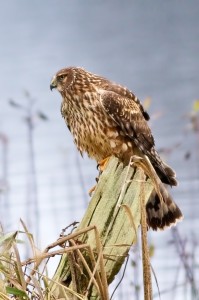

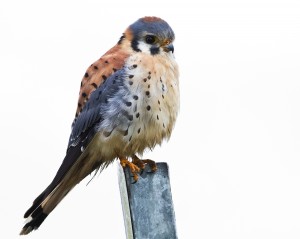

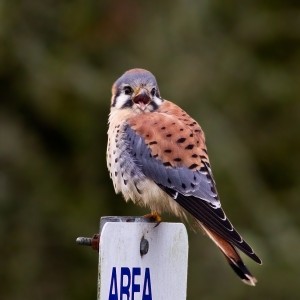
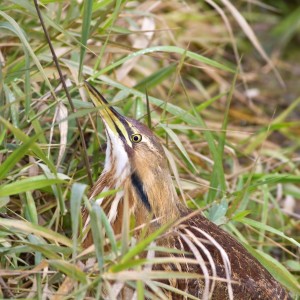

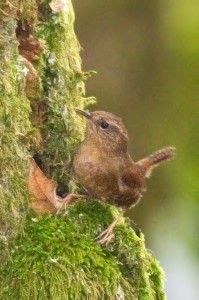
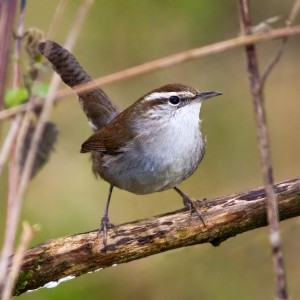
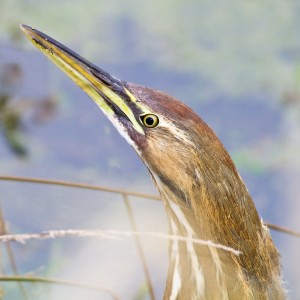
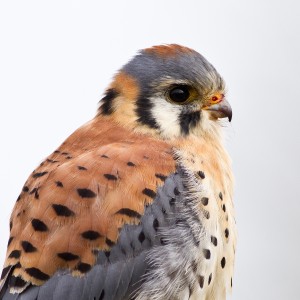
Great series of photos! I somehow lost the URL to your blog for a bit but I’m glad to have found it again… I love the soft bittern head shot especially.
Thanks Jen! I appreciate you stopping by for a look!
Pingback: Bruce McCammon Photography
Bruce, that probably was you so close to the kestrel that day! I’m sure a bunch of photographers got similar shots that day. A great time!
Wow, I want to run into that Kestrel! It looks like it had recently had a meal from that last shot you posted, maybe they are less jumpy when they are full!
Could be Arman! This guy was quite the social bird. There were times there were 3 or 4 cars parked or passing around the sign he was on and he didn’t let that bother him a bit. By far, the most cooperative a kestrel has ever been for me.
Congrats on getting a lot of traffic to your site Dennis! Only been up for a few weeks and already have 2400 hits!